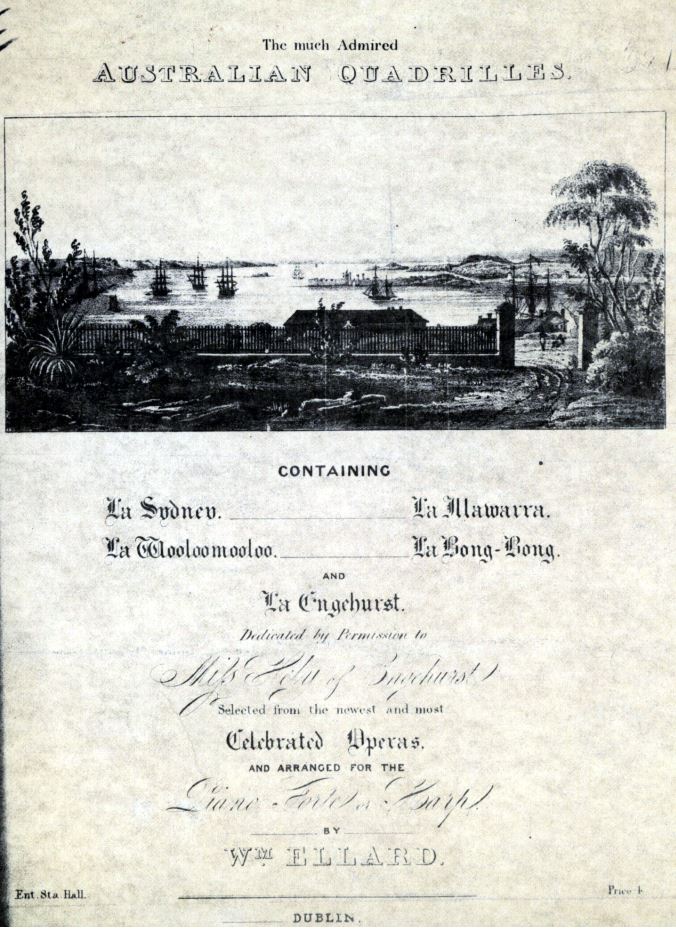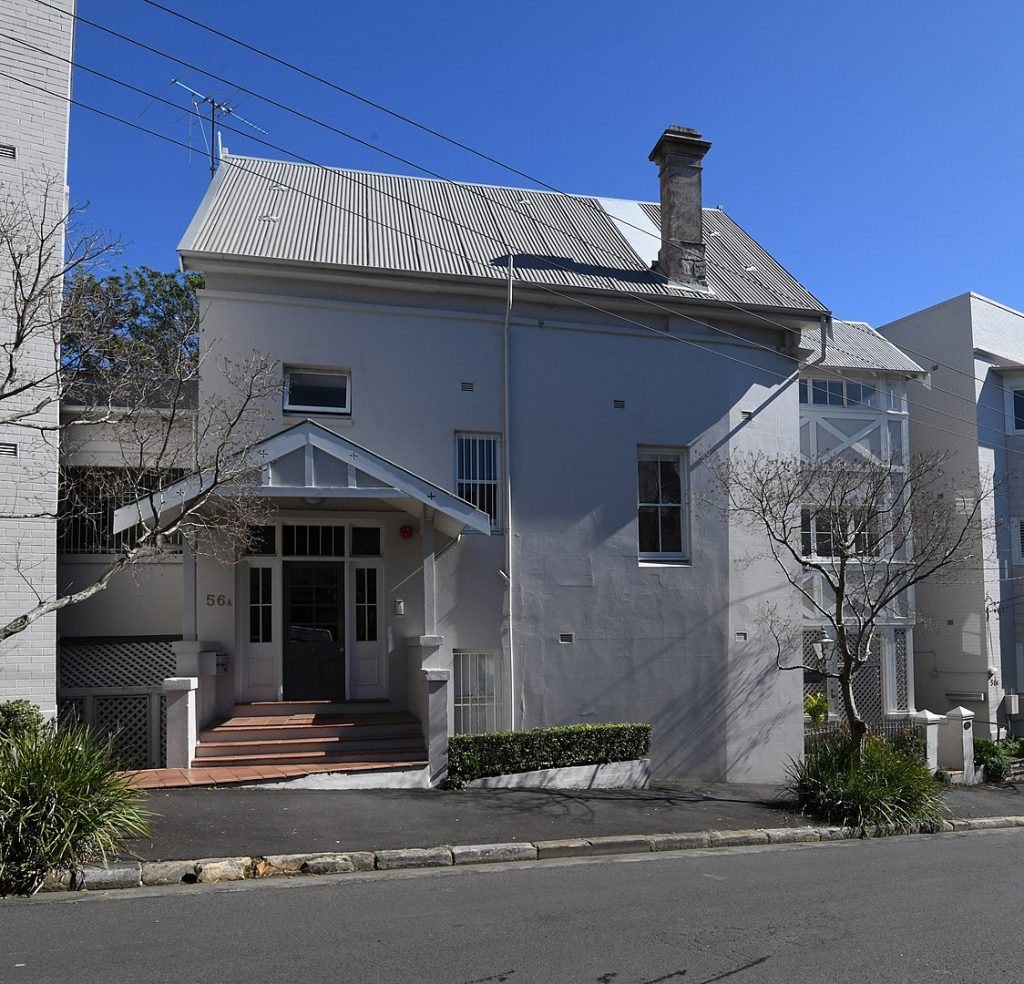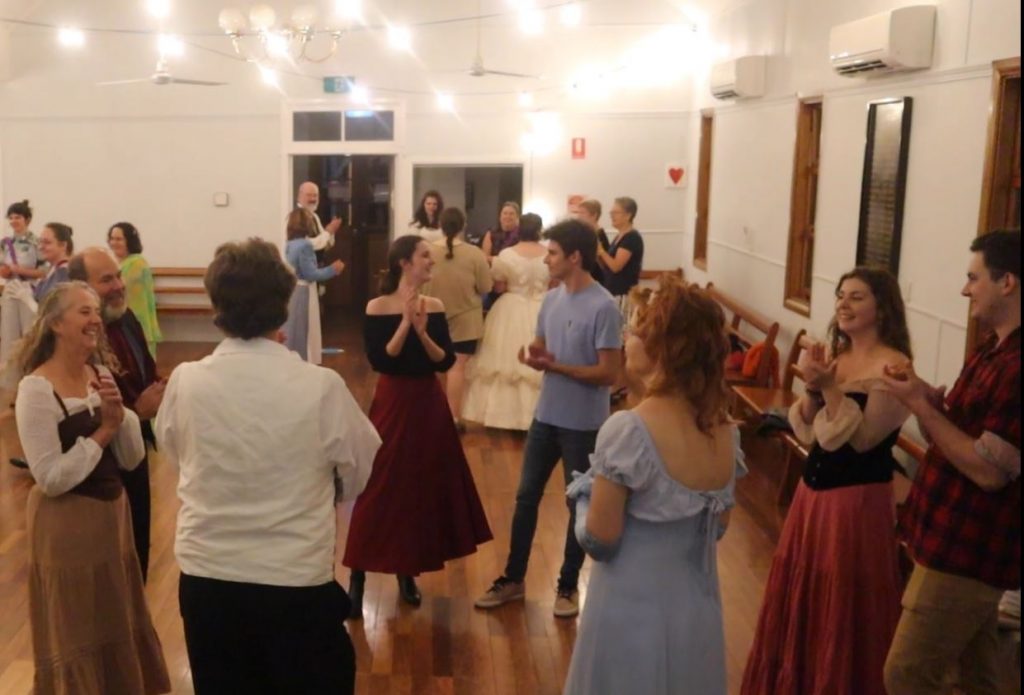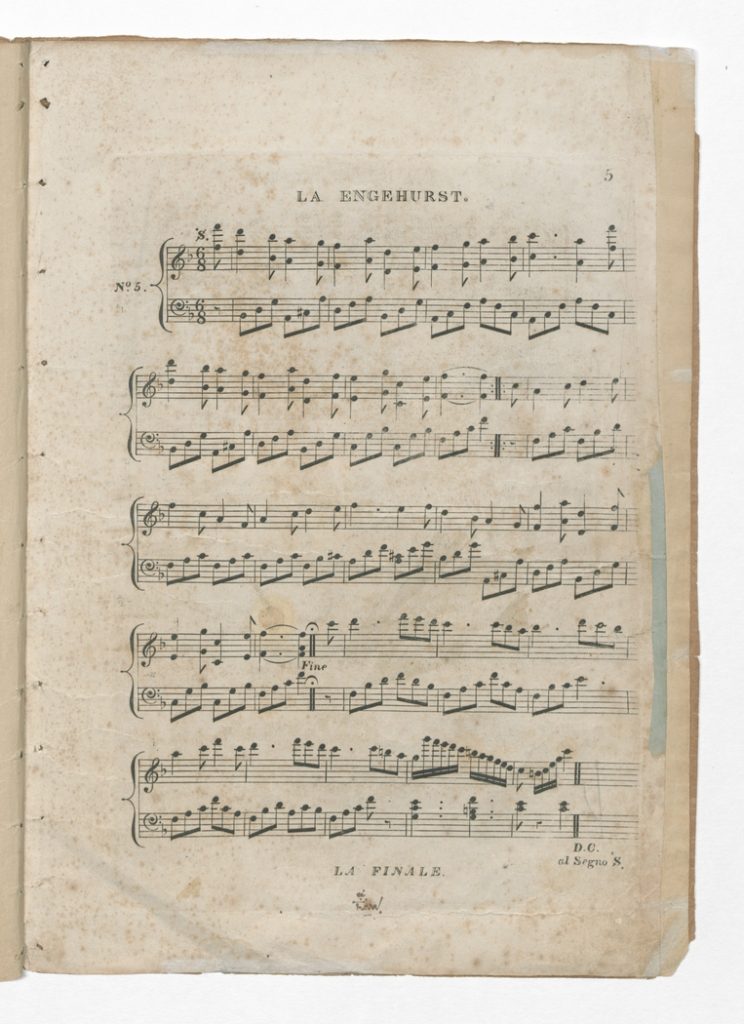In 1835, the music for The Much Admired Australian Quadrilles arrived in Sydney. The colonial the music-seller, Mr. Ellard of Hunter Street, had arranged for his father in Dublin to print and ship the music, specifically for the Australian market. The music quickly received favourable reviews in the local papers:
… we are satisfied that they will afford many a[?] happy hour of amusement to the Australian daughters and sons of Terpsichore. We strongly recommend them to the attention of the public. The Sydney Herald, 24 December 1835
The quadrille was an arrangement of airs from the newest and most celebrated operas, and designed for the benefit of young pianists. Quadrilles were divided into five parts which a different dance for each tune. The Much Admired Australian Quadrilles included:
- La Sydney (the march in Bellini’s Norma)
- La Wooloomooloo
- La Illawarra
- La Bong-Bong (a place near Mona Vale)
- La Engehurst (the popular British song, The girl I left behind me)

Dedicated to Miss Hely of Engehurst
The music for this most fashionable set of dances was dedicated to Miss Hely of Engehurst – with her permission. This genteel young lady was the eldest daughter of Frederick Hely, the Principal Superintendent of Convicts. At the time, the Helys had recently moved into their elegant new mansion, Engehurt, in the refined area of Paddington where it was situated on their 2.8 hectare property. It was one of the elegant Georgian villas of Wooloomoolloo Hill designed by the architect John Verge, who created a number of fine houses for the senior civil servants of the colony. The ‘magnificent stone house … beyond the windmills” had enchanting views through their garden to the harbour; it was built using convict labour and is now on the New South Wales State Heritage Register.

Frederick Hely was an Irishman from County Tyrone who was appointed Superintendent of Convicts in 1823. He arrived in Sydney via a convict ship with his wife and three young children and became a man of some importance, “a gentleman of correct deportment, and of highly honourable principles”. His many official roles included justice of the peace, president of the Board of Magistrates, acting superintendent of police, and a member of the Assignment Board.
For all his enlightened interest in music for the parlours of the Sydney gentry, Hely was much less supportive of the musical activities of the under classes. When sitting on the bench, Hely was typical of Sydney magistrates in taking a dim view of disorderly houses wherein occurred “fuddling, fiddling, and dancing”. On one occasion in February 1827 Hely sentenced a “Sydney Orpheus who kept the people capering at their midnight orgies to 5 days solitary confinement on bread and water”. Australharmony
Read more about the case of the Sydney Orpheus >>>
Miss Mary Hely to whom to The Much Admired Australian Quadrille was dedicated, married on January 3, 1838, at St. James’ Church, by the Lord Bishop of Australia, to Captain Gother K. Mann, of the Bombay Horse Artillery. According to the records, she raised a musical family, and presumably continued to enjoy Ellard’s special music throughout her life.

Part of the Engehurst mansion is preserved and listed on the New South Wales State Heritage Register.

Dancing The Much Admired Australian Quadrille at Samford Community Folk Dance during the National Heritage Festival 
Music available at the National Library of Australia. Much Admired
References
I am indebted to Graeme Skinner for the information about The Much Admired Australian Quadrille on the Australharmony website.
ENGEHURST. (1929, January 24). The Sydney Morning Herald (NSW : 1842 – 1954), p. 5. Retrieved September 3, 2021, from http://nla.gov.au/nla.news-article16526016
A. F. Pike, ‘Hely, Frederick Augustus (1794–1836)’, Australian Dictionary of Biography, National Centre of Biography, Australian National University, https://adb.anu.edu.au/biography/hely-frederick-augustus-2177/text2797, published first in hardcopy 1966, accessed online 4 September 2021.
Skinner, Graeme (University of Sydney), “A biographical register of Australian colonial musical personnel–H (Ha-He)”, Australharmony (an online resource toward the history of music and musicians in colonial and early Federation Australia): https://rp.sydney.edu.au/paradisec/australharmony/register-H-1.php#HELY-Mary accessed 4 September 2021
Acknowledgement of Country.
We acknowledge the traditional custodians of the Country on which we live and work, and pay respect to Elders past, present and emerging. We acknowledge the impact colonialism has had on Aboriginal Country and Aboriginal peoples and that this impact continues to be felt today.
The information on this website www.historicaldance.au may be copied for personal use only, and must be acknowledged as from this website. It may not be reproduced for publication without prior permission from Dr Heather Blasdale Clarke.


